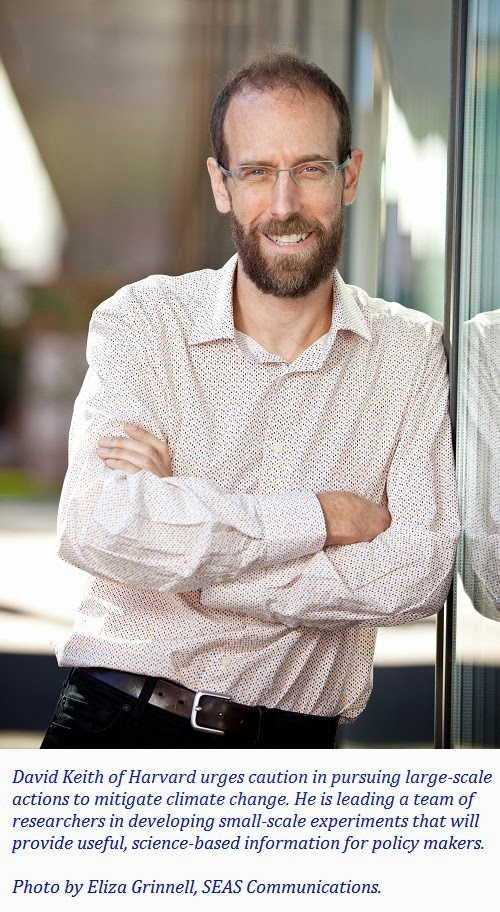Vol. 1, No. 3 | December
1, 2014 | AAI Foresight
Inside Foresight SIGNALS
> 10 Consumer Trends for Latin America
> How to Test Climate Change Solutions
> When Not to
Take Smart Pills
> Big Data and the Information Revolution: Report from
David Pearce Snyder
> The Réunion Island Story: Report from Timothy Mack
> Newsmakers: Edward Gordon, Thomas Frey, and State of the Future
> SIGNALS Feedback: Biofuels versus Food?
10 Consumer Trends for Latin America
Using cultural observation, trend spotting, scenarios,
design thinking, and other futures tools, the consulting firm –BAUTISTA– has identified 10 key trends
that will affect companies doing business in Latin America in 2015:
1. Bubble Life:
consumption habits focusing on the hyperlocal, or nearest surroundings.
2. Less Is More: a
growing preference for smaller spaces, fewer objects, and more connectivity.
3. Freedom as
Aspiration: rejection of restrictive schedules and spaces, demand for more
decision-making power.
4. Low-Profit Company:
entrepreneurship based on wage justice; quality over utility.
5. Millennials ≠
Teens: with maturity come work and family responsibilities—and
socioeconomic influence.
6. Next-Tech Massification:
life-altering technologies from smart cars to smart glasses will approach
mainstream.
7. Polarization:
public abandons the middle ground in significant social conversations.
8. Pure: The New
Natural: intensifying paranoia over the artificial in food choices.
9. Saturation à Apathy:
information overload leads to avoidance of media.
10. Slow Down: rush
is anathema; consumers seek stress-reduction remedies.
The report, 10T415
(Ten Trends for 2015), provides a rich assortment of examples for the trends,
as well as incisive forecasts based on the research analysis.
–BAUTISTA– is a research and marketing consulting firm that
tailors strategies for clients working in Latin America. To request a copy of 10T415
(Ten Trends for 2015), which is available in English or Spanish, please contact
Luis Carlos Chacón: luiscarlos@bautista.la
or Juan José Baute: juanjose@bautista.la
How to Test Climate Change Solutions
Geoengineering projects aimed at solving climate change
problems might seem too big to test. After all, the earth and its atmosphere
are mighty big fields in which to conduct experiments.
 Researchers at Harvard School of Engineering and Applied
Sciences are now pursuing a small-scale experiment for testing such risky
approaches as solar radiation management (SRM). The proposed experiment would
involve small amounts of sulfuric acid (about the amount that a commercial
aircraft releases in a few minutes of flight in the stratosphere) to determine
the effects of SRM on radiative heating, water vapor concentration and
movement, and the risks of ozone loss.
Researchers at Harvard School of Engineering and Applied
Sciences are now pursuing a small-scale experiment for testing such risky
approaches as solar radiation management (SRM). The proposed experiment would
involve small amounts of sulfuric acid (about the amount that a commercial
aircraft releases in a few minutes of flight in the stratosphere) to determine
the effects of SRM on radiative heating, water vapor concentration and
movement, and the risks of ozone loss.
The researchers hope to provide better, science-based
information for policy makers, according to project leader David Keith, the Gordon McKay Professor of Applied Physics at
Harvard SEAS and a professor of public policy at Harvard Kennedy School.
“There is a wide range of experiments that could be done
that would significantly reduce our uncertainty about the risks and
effectiveness of solar geoengineering,” Keith said in a press statement. “Many
could be done with very small local risks.”
Signals: climate
change, geoengineering, public policy
When Not to Take Smart Pills
Who doesn’t want to be smarter and more creative than they
already are? Students at exam time are especially drawn to so-called smart
drugs that offer hope for enhancing cognitive performance or creative thinking.
The smart-drug solution might backfire on healthy students,
however. Research recently published in PLOS ONE showed negative effects on
healthy subjects using the popular drug Modafinil.
It is important to note that these results were for healthy
test subjects. Modafinil or other performance enhancers may yet be valuable for
those who fall in the lower end of the spectrum for cognition or creative
thinking, or for adolescents, whose brains are still developing. However,
Mohamed’s future research will focus on nonpharmacological solutions, such as
meditation, exercise, and diet.
Reference: PLOS
ONE manuscript PONE-D-14-10968, “Modafinil increases the latency of response in
the Hayling Sentence Completion Test in Healthy Volunteers: A Randomised
Controlled Trial,” Ahmed Dahir Mohamed and Chris Roberts Lewis, Trial
Registration, Clinical Trial.gov identifier: NCT02051153
Signals: human
enhancement, mindfulness, pharmacology, psychology, youth
Big Data and the Information Revolution: Report from David Pearce Snyder
In my strategic briefings around the country, I routinely
ask my audiences (largely managers and professionals) whether they have heard
the term “Big Data,” and most of them raise their hands. But, when I ask how
many of them know exactly what “Big Data” means, almost no hands go up.
The term is clearly riding a rising “hype cycle,” as
reflected by a report in the July 24, 2014, issue of InfoWorld Tech
Watch: “A recent survey by Gartner, the IT research firm, found that
64% of large enterprises are investing in ‘Big Data,’ but also found that a
similar chunk of firms (60%) don’t have a clue as to what to do with it.”
This apparently indiscriminate management enthusiasm for Big
Data can be forgiven (at least in part). Big Data boosterism has been intense.
One keynote speaker at the 2012 Davos World Economic Forum proclaimed
that “Big Data is a new class of asset, like currency or gold!” Later that
year, Gartner forecast that, by 2015, Big Data “would directly generate 1.9
million new jobs, and indirectly generate 5.7 million additional new positions.”
Read more.
Excerpted from “Big
Data - the Real Information Revolution” by David Pearce Snyder, AAI Foresight Blog (November 17, 2014). Snyder is
a futurist consultant and principal of The
Snyder Family Enterprise.
Signals: big data,
computing, hype, information, management, simulation
The Réunion Island Story: Report from Timothy Mack
It is often stated that productivity-enhancing technology
may eliminate jobs, but innovation will create more. The experience of Réunion
Island in the Indian Ocean offers an illustration and test case for this
principle.
AAI Foresight
recently had the opportunity to assist some regional business leaders in
exploring the Indian Ocean’s widely presumed potential for rapidly becoming a
powerhouse of economic, social, cultural and political development. In fact,
the Indian Ocean is truly poised to be one of the twenty-first century’s
leading strategic theaters as a crossroad of global trade and economic growth,
as well as potential crises. …
Over the next 20 years, several areas of uncertainty will
accompany the rapid social, cultural, technological, and geopolitical changes
expected throughout the Indian Ocean region. This transformation will be
enhanced by extraordinary growth in a range of technologies, especially in
renewable energy, food science, and biotechnology.
Excerpted from “The
Indian Ocean: Growth and the Jobs of Tomorrow” by Timothy Mack, AAI
Foresight Blog (November 23, 2014).
Photo courtesy of Reef
Check.
Signals: business,
climate change, development, energy, environment, fisheries, industry, islands,
oceans, reefs, trade
Newsmakers: Edward Gordon, Thomas Frey, and State of the Future
In an interview with the Desert
Sun, Dr. Edward E. Gordon, author of Future Jobs and president of Imperial
Consulting Corporation, was lauded for his
efforts to promote rational approaches to the current jobs crisis. At issue is
the surplus of workers and shortage of skills—not just in the United States,
but around the world, creating a global talent competition. Read “Unfilled
Key Jobs Crisis Takes on Worldwide Proportions” by Morris Beschloss, Desert Sun, November 18, 2014.
Picking up on the theme of turmoil in the world of work, DaVinci Institute President Thomas Frey predicted that technological disruptions from
such innovations as the Internet of Things will eliminate billions (yes, billions) of jobs in the next 15
years—but will also create countless new occupations. His presentation for Rockwell Automation’s Process
Solutions User Group was covered in the
industrial engineering journal Control.
Read “Opportunity,
Upheaval Ahead in Technology-Driven Future” by Jim Montague, Control, November 17, 2014.
“For better and for worse, there is nothing quite like The Millennium Project, an
awesome but unwieldy distillation, of trends, forecasts, and proposals largely
concerning 15 Global Challenges,” writes Michael
Marien in his extensive and detailed review of 2013-14 State of the Future,
the September 2014 book of the month at Global Foresight Books. This 17th edition of SOTF was written by Jerome C. Glenn, Theodore J. Gordon,
and Elizabeth Florescu, the
director, senior fellow, and director of research, respectively, of The
Millennium Project.
Marien, perhaps best known as the longtime editor of Future Survey, offers a balanced but
sharp assessment of the volume in his review, scheduled to be published in the
Winter 2014 issue of World Future Review:
“There is much to commend this ambitious overview, but much to question,”
he writes. While praising the content of the report, he warns that “the
presentation leaves much to be desired.” Read
the full review here.
SIGNALS Feedback: New Source for Tomorrow’s Biofuels (FS, Vol. 1, No. 2)
Hazel Henderson
(via e-mail): We at Ethical
Markets Green Transition Scoreboard® track only biofuels that do not
compromise food supplies and are sustainable, such as from algae grown on
seawater. Kelp is a nutritious food for humans, as in Japan and elsewhere. The
Norwegians are on the wrong track here! See the Masdar Institute’s work with
Boeing in our February
10, 2014, report.
Foresight SIGNALS is a publication of AAI Foresight
1619 Main Street
#1172
Freeland, WA 98249
Managing Principal:
Timothy C. Mack
tcmack333@gmail.com |
202-431-1652
Webmaster and IT
Consultant: Tom Warner
Consulting Editor:
Cynthia G. Wagner
AAI Foresight
provides issues identification and tracking, strategic planning, organizational
development, messaging, marketing, technological assessment, and strategic
services for a broad range of clients.















